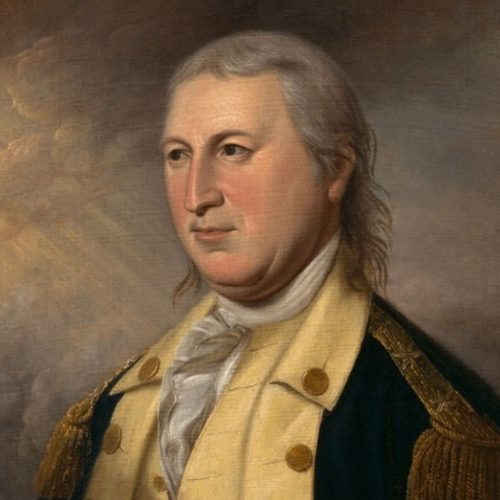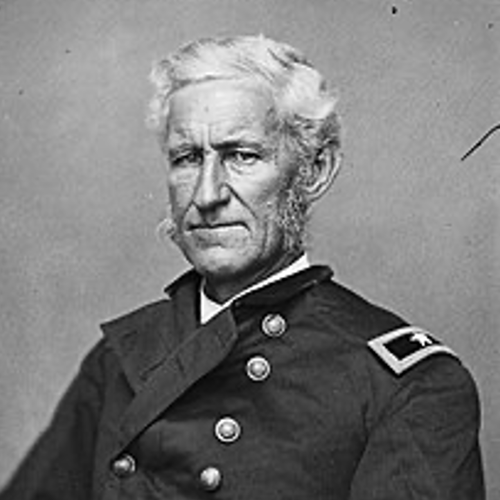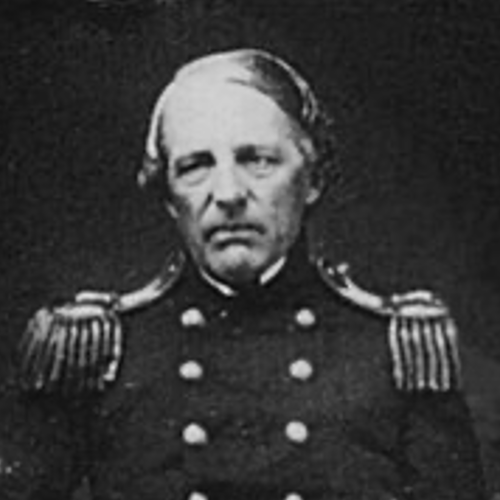Horatio Gates
Born in England, Horatio Gates served in the British Army before coming to America. When the War against Britain began, Gates rushed to Mt. Vernon to join George Washington in the fight. George Washington recommended Gates to be the adjutant of the Army. In June 1775, Congress appointed Gates the first adjutant general of the Army.
Zebulon Pike
Following in the footsteps of his father who served in the opening years of the Revolutionary War, Zebulon Pike would serve near St. Louis working on logistics and payroll at a number of posts including Fort Bell Fontaine, near St. Louis. In 1805, he was given the mission to find the source of the Mississippi River, to explore the northern part of the newly created Louisiana Territory and to expel Canadian fur traders who were illegally trading within the U.S. Almost immediately after the completion of the first expedition, Pike was tasked to explore, map and find the headwaters of the Arkansas and Red Rivers. In November 1806, Pike and his team sighted and tried to climb the summit of a peak later named after him and his expedition – Pikes Peak. They found it impossible with waist-high snow impeding their progress.
Samuel Cooper
Samuel Cooper entered the United States Military Academy at age 15 and graduated in 1815 becoming a Field Artillery officer. He served in various Field Artillery units until appointed the chief clerk of the War Department in 1837. He was appointed the Army’s Adjutant General in 1852. He served briefly as the U.S. Secretary of War in 1857. At the beginning of the Civil War, he joined the Confederacy. Because of his extensive experience in the U.S. Army, he was a great asset for the Confederacy and was actually the highest-ranking soldier in the Confederate Army outranking R. E. Lee, Albert Sidney Johnston, P.E.T. Beauregard and Joseph E. Johnston.
Lorenzo Thomas
Upon the resignation of Samuel Cooper, Lorenzo Thomas was appointed the Army’s Adjutant General in 1861. He had graduated from West Point in 1823 in the Infantry. He had served in the Seminole Wars and the Mexican-American War. Unlike his predecessor, he served in the Union Army. In 1863, Thomas was sent by the War Department to Arkansas to recruit freedmen into the U.S. Army. He created the first black troop from Arkansas who fought for the Union side as a part of the Bureau of Colored Troops that was created by the War Department on May 22, 1862. He remained the Adjutant General until his retirement in 1869.
Edward D. Townsend
The grandson of Founding Father, Eldridge Gerry, Edward Townsend graduated from West Point in 1837 as a field artilleryman and participated in the Second Seminole War and the relocation of the Cherokee Nation. He was transferred to the Adjutant General Corps in 1846. He served on the Pacific Coast from 1851-1856. In 1869, he became the Army’s Adjutant General, serving in that position until 1880.
The Adjutant General Corps is an essential branch of the United States Army, responsible for providing personnel support, postal services, and record-keeping. The Corps has been the backbone of the military’s administrative system since its inception in 1775. West Point, the United States Military Academy, has produced many notable graduates who have gone on to serve in the Adjutant General Corps, contributing significantly to its legacy. In this article, we will explore the importance of the Adjutant General Corps and highlight some of the most distinguished West Point graduates who have served in this branch since World War I.
Role of the Adjutant General Corps
The Adjutant General Corps is responsible for a wide range of critical functions within the military. Its primary duties include maintaining personnel records, managing promotions and awards, overseeing postal operations, and coordinating casualty and mortuary affairs. This branch ensures the smooth functioning of the Army by providing essential support services to soldiers and their families.




